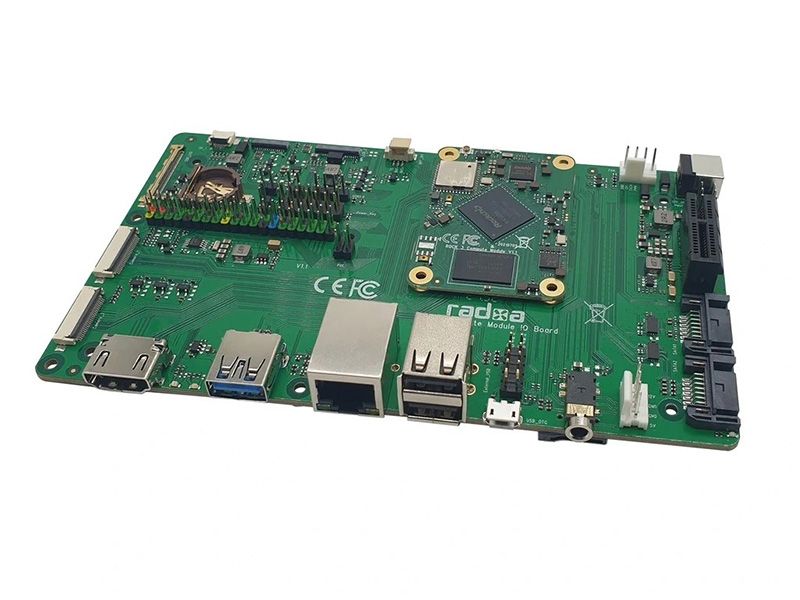
Radxa CM3 IO Board by Radxa Limited
Radxa CM3 + Raspberry Pi CM4 IO Board is an application board for the ROCK3 Compute Module(CM3) with rich IO features.
Unleash the potential of your Radxa ROCK 3 Compute Module (CM3) with The ROCK 3 Compute Module (CM3) IO Board, a high‑performance, interface‑rich application board, providing SD card slot, SATA interface, PCIe, HDMI, MIPI, Ethernet, TP interface, eDP screen, USB3.0, USB2. 0, RTC, CSI, GPIO, headphone jack, fan, and other rich peripheral interfaces.
Details
- Key features of the ROCK 3 Compute Module (CM3) IO Board
- Half mini-itx design
- Support for multiple display interfaces including HDMI, 2x MIPI DSI/LVDS, eDP, with the option to have dual displays
- Support for x1 PCIe card
- Up to 2x SATA via USB3.0, or PCIe 2.0
- Supports Ubuntu/Debian and Android
- Multiple Connectivity Options
- 5 x USB 2.0 ports (2 x internal USB2 headers, 3 x type connectors)
- 1 x USB 3.0 port (5Gbps, type A connector)
- 1x USB 2.0 OTG (Micro USB connector)
- 1 x PCIe 1-lane Host, Gen 2 (5Gbps, x1 PCIe connector)
- 2 x SATA 7P connectors (1 x shared with USB 3, 1 x shared with PCIe)
- 1 x microSD card connector
- 40 x GPIO pin header
- Reliable Network Option with PoE Support
- 1x Gigabit Ethernet RJ45 with PoE support
- Video and Audio Connectivity
- 1 x HDMI up to 4K x 2K@60HZ
- 1 x eDP support 4K x 2K@60HZ
- 2 x MIPI DSI 4 lanes, supporting dual displays up to 1920 x 1080@60HZ
- Dual MIPI CSI input
- 5mm headphone jack with mic support
- Other features of the ROCK 3 Compute Module (CM3) IO Board
- Li-Ion battery connector
- RTC battery connector
- FAN connector
Purchase
Contribute
Have some info to add for this board? Edit the source for this page here.
Adafruit Blinka Installation
We use a special library called adafruit_blinka (named after Blinka, the CircuitPython mascot) to provide the layer that translates the CircuitPython hardware API to whatever library the Linux board provides.
For example, on Raspberry Pi we use the python RPi.GPIO library. For any I2C interfacing we'll use ioctl messages to the /dev/i2c device. For SPI we'll use the spidev python library, etc. These details don't matter so much because they all happen underneath the adafruit_blinka layer.
